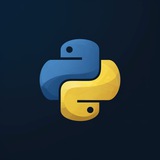Please open Telegram to view this post
VIEW IN TELEGRAM
❤55👍22🔥12
Please open Telegram to view this post
VIEW IN TELEGRAM
❤25
Media is too big
VIEW IN TELEGRAM
In this Docker Tutorial I show how to get started with Docker for your Python Scripts and Python Web Apps. We look at two different...
Please open Telegram to view this post
VIEW IN TELEGRAM
❤29🔥7👍6
Please open Telegram to view this post
VIEW IN TELEGRAM
❤41👍20🔥5
Why type emails when Python can do it for you? Work smarter, not harder... unless you’re debugging. 😅💻
Please open Telegram to view this post
VIEW IN TELEGRAM
❤63👍13🔥10
Please open Telegram to view this post
VIEW IN TELEGRAM
3❤42👍12🔥1
📋 This Python program shows how to use namedtuple to create lightweight, readable data structures instead of regular tuples!
✨ Example Output:
Alice 30 Paris
Please open Telegram to view this post
VIEW IN TELEGRAM
❤37👍12🔥5
Please open Telegram to view this post
VIEW IN TELEGRAM
🔥25👍12❤11
Please open Telegram to view this post
VIEW IN TELEGRAM
🔥17👍7❤6
🔅 Data Science Foundations: Data Mining in Python
🌐 Author: Barton Poulson
🔰 Level: Intermediate
⏰ Duration: 3h 3m
📗 Topics: Data Mining, Python
📤 Join Learn Python for more courses
🌀 Learn the key concepts and skills behind one of the most important elements of data science: data mining.
Please open Telegram to view this post
VIEW IN TELEGRAM
❤8
Data mining is the area of data science that focuses on finding actionable patterns in large and diverse datasets: clusters of similar customers, trends over time that can only be spotted after disentangling seasonal and random effects, and new methods for predicting important outcomes. In this course, instructor Barton Poulson introduces you to data mining that uses the programming language Python. Barton goes over some preliminaries, such as the tools you may use for data mining. He discusses aspects of dimensionality reduction, then explains clustering, including hierarchical clustering, k-Means, DBSCAN, and more. Barton covers classification, including kNN and decision trees. He goes into association analysis and introduces you to Apriori, Eclat, and FP-Growth. Barton steps you through a time-series decomposition, then concludes with sentiment scoring and other text mining tools.
Please open Telegram to view this post
VIEW IN TELEGRAM
❤10
Please open Telegram to view this post
VIEW IN TELEGRAM
❤15
